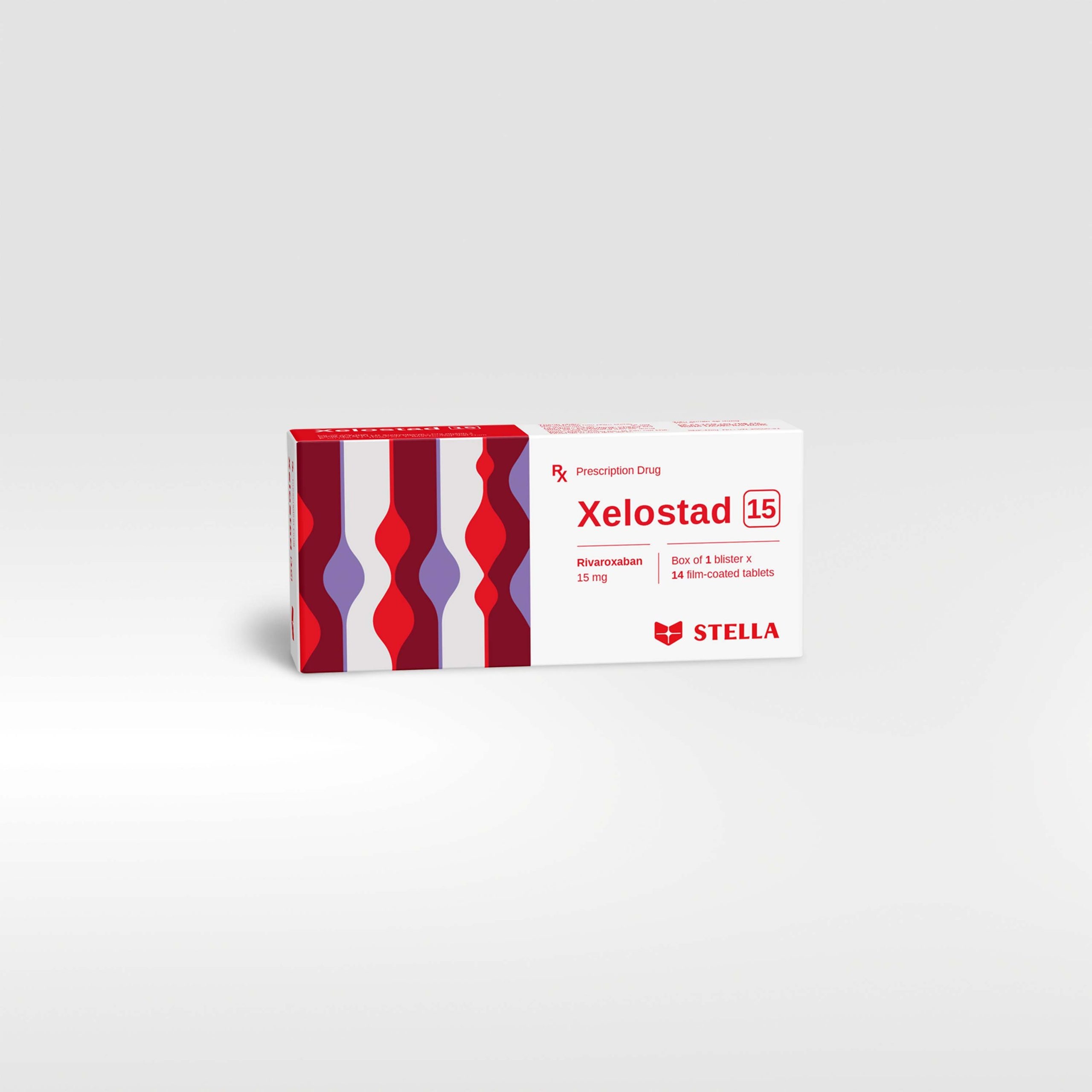Haemorrhagic risk
- It is recommended to be used with caution in conditions with increased risk of haemorrhage. Xelostad 15 administration should be discontinued if severe haemorrhage occurs.
- In the clinical studies mucosal bleedings (i.e. epistaxis, gingival, gastrointestinal, genito urinary including abnormal vaginal or increased menstrual bleeding) and anaemia were seen more frequently during long term rivaroxaban treatment compared with VKA treatment.
- These patients are to be carefully monitored for signs and symptoms of bleeding complications and anaemia after initiation of treatment.
- Any unexplained fall in haemoglobin or blood pressure should lead to a search for a bleeding site.
- Rivaroxaban levels measured with a calibrated quantitative anti-factor Xa assay may be useful in exceptional situations may help to inform clinical decisions, e.g. overdose and emergency surgery.
Renal impairment
- In patients with severe renal impairment (creatinine clearance < 30 ml/min) rivaroxaban plasma levels may be significantly increased (1.6-fold on average) which may lead to an increased bleeding risk. Xelostad 15 is to be used with caution in patients with creatinine clearance 15 – 29 ml/min. Use is not recommended in patients with creatinine clearance < 15 ml/min.
- Xelostad 15 should be used with caution in patients with renal impairment concomitantly receiving other medicinal products which increase rivaroxaban plasma concentrations.
Interaction with other medicinal products
- The use of Xelostad 15 is not recommended in patients receiving concomitant systemic treatment with azole-antimycotics. These active substances are strong inhibitors of both CYP3A4 and P-gp and therefore may increase rivaroxaban plasma concentrations to a clinically relevant degree (2.6 fold on average) which may lead to an increased bleeding risk.
- Care is to be taken if patients are treated concomitantly with medicinal products affecting haemostasis such as nonsteroidal anti-inflammatory medicinal products (NSAIDs), acetylsalicylic acid (ASA) and platelet aggregation inhibitors or selective serotonin reuptake inhibitors (SSRIs), and serotonin norepinephrine reuptake inhibitors (SNRIs). For patients at risk of ulcerative gastrointestinal disease an appropriate prophylactic treatment may be considered.
Other haemorrhagic risk factors
Rivaroxaban is not recommended in patients with an increased bleeding risk.
Patients with prosthetic valves
Treatment with Xelostad 15 is not recommended for these patients.
Patients with antiphospholipid syndrome
Rivaroxaban are not recommended for patients with a history of thrombosis who are diagnosed with antiphospholipid syndrome. In particular for patients that are triple positive (for lupus anticoagulant, anticardiolipin antibodies, and anti-beta 2-glycoprotein I antibodies), could be associated with increased rates of recurrent thrombotic events compared with vitamin K antagonist therapy.
Patients with non-valvular atrial fibrillation who undergo PCI with stent placement
Data on efficacy in this population are limited.
Haemodynamically unstable (PE) patients or patients who require thrombolysis or pulmonary embolectomy
Xelostad 15 is not recommended as an alternative to unfractionated heparin in patients with pulmonary embolism who are haemodynamically unstable or may receive thrombolysis or pulmonary embolectomy.
Spinal/epidural anaesthesia or puncture
Risk of developing an epidural or spinal haematoma which can result in long-term or permanent paralysis. The risk may also be increased by traumatic or repeated epidural or spinal puncture. Patients are to be frequently monitored for signs and symptoms of neurological impairment.
Dosing recommendations before and after invasive procedures and surgical intervention
- If an invasive procedure or surgical intervention is required, Xelostad 15 should be stopped at least 24 hours before the intervention, if possible and based on the clinical judgement of the physician.
- If the procedure cannot be delayed the increased risk of bleeding should be assessed against the urgency of the intervention.
- Xelostad 15 should be restarted as soon as possible after the invasive procedure or surgical intervention provided the clinical situation allows and adequate haemostasis has been established as determined by the treating physician.
Elderly population
Increasing age may increase haemorrhagic risk.
Dermatological reactions
Serious skin reactions, including Stevens-Johnson syndrome/Toxic Epidermal Necrolysis, have been reported during post-marketing surveillance in association with the use of rivaroxaban. Rivaroxaban should be discontinued at the first appearance of a severe skin rash (e.g. spreading, intense and/or blistering), or any other sign of hypersensitivity in conjunction with mucosal lesions.
Xelostad 15 contains lactose. Patients with rare hereditary problems of galactose intolerance, total lactase deficiency or glucose-galactose malabsorption should not take this medicine.
Xelostad 15 is contraindicated during pregnancy and lactation.
Patients should be aware of how they react to drug before driving or operating machinery.





